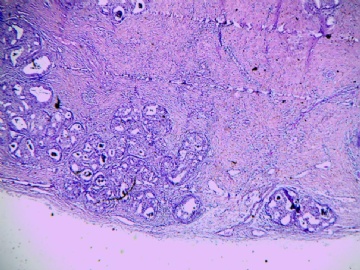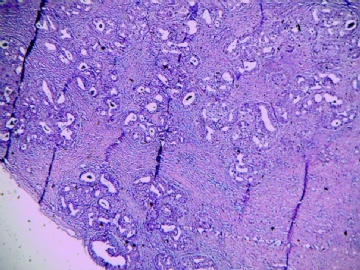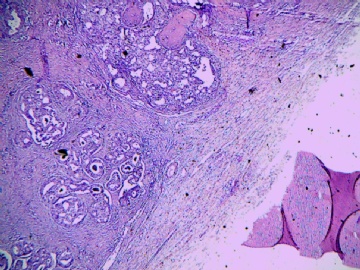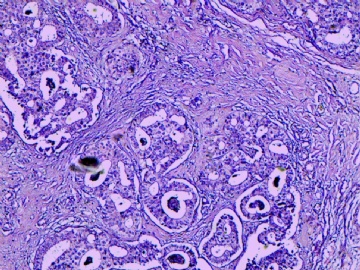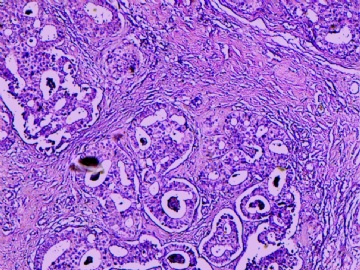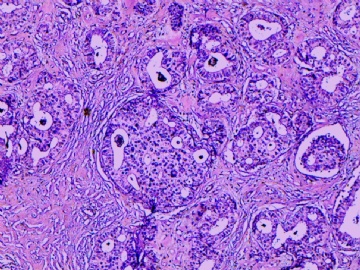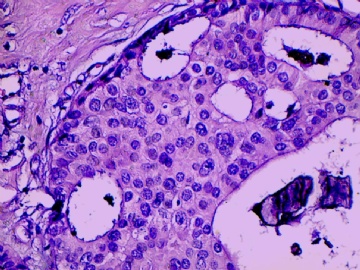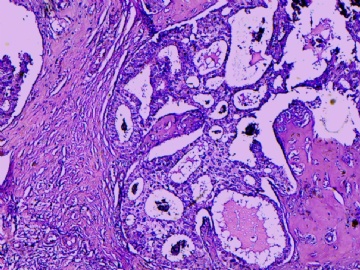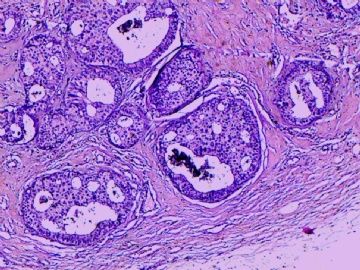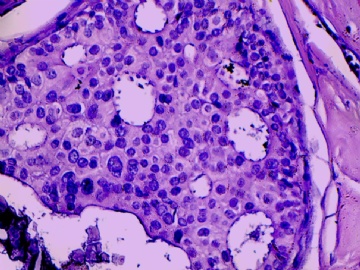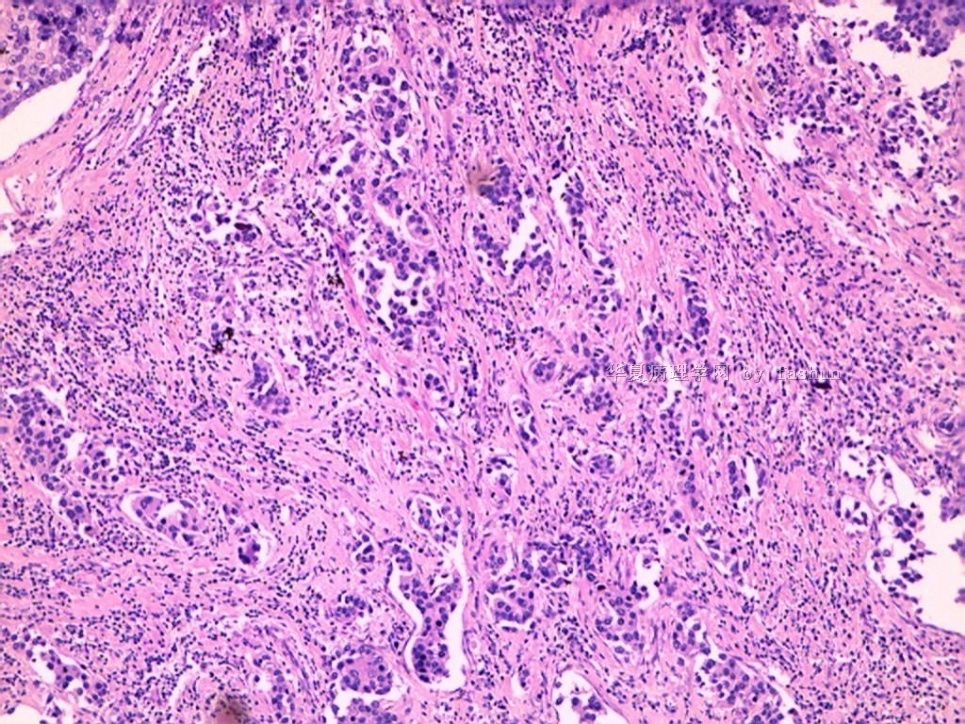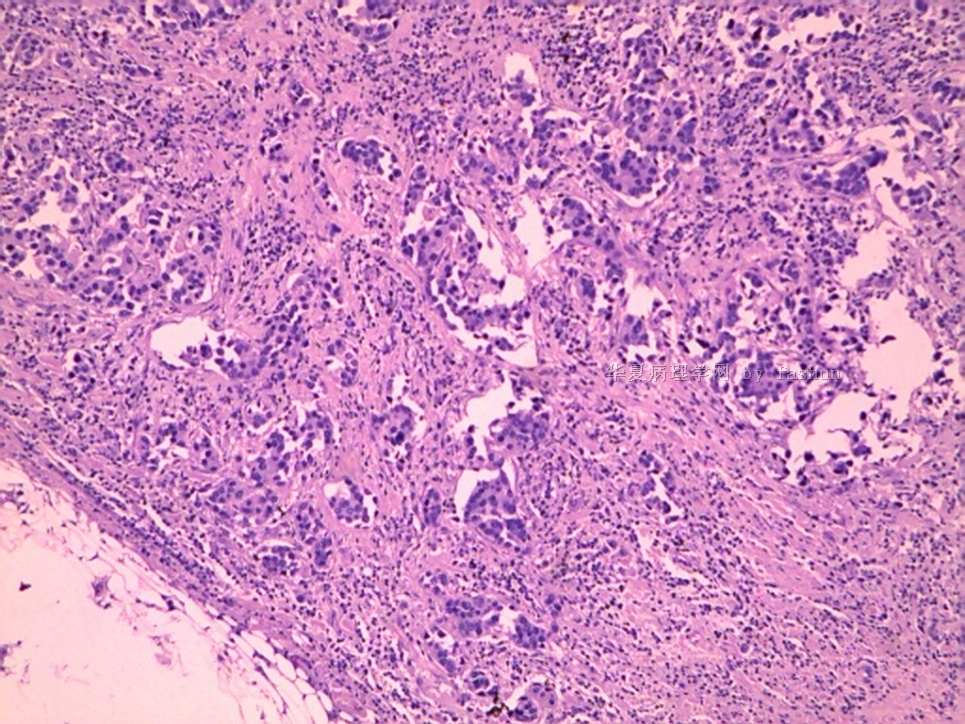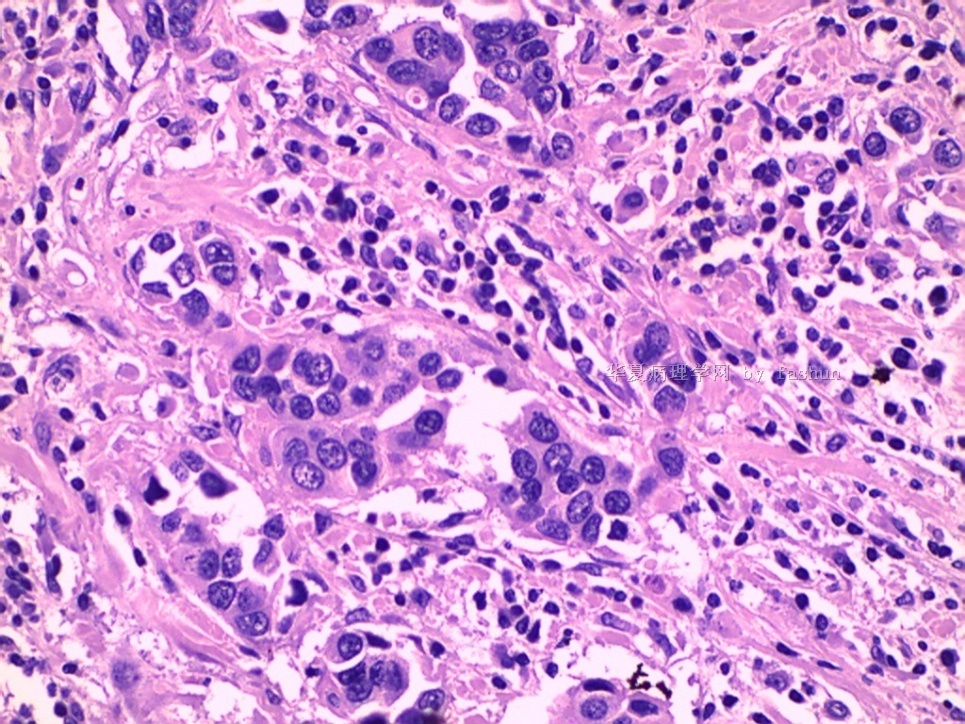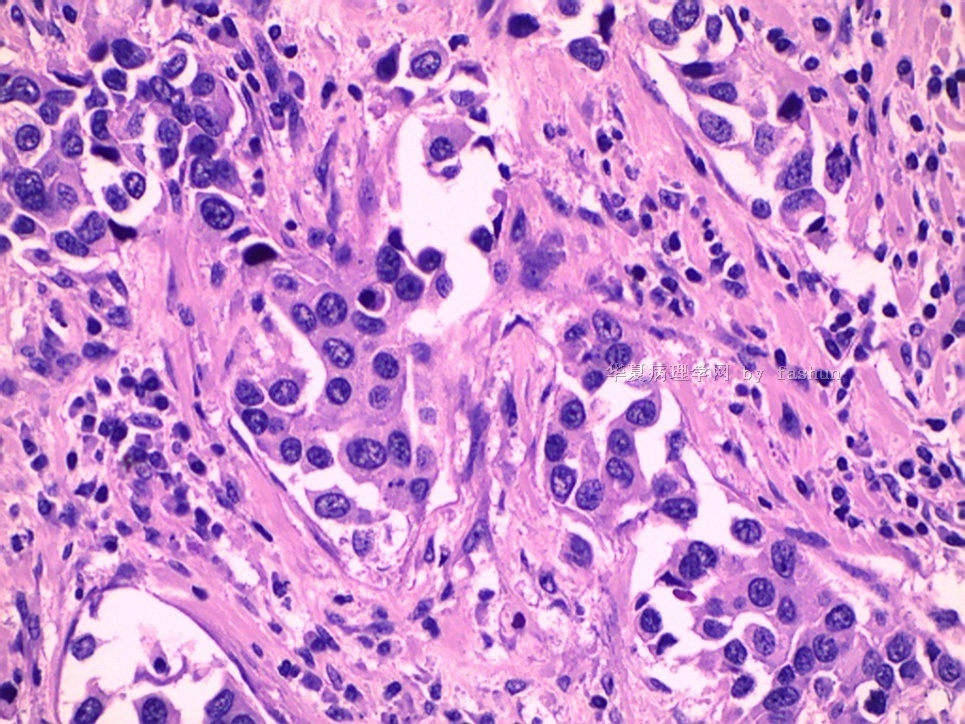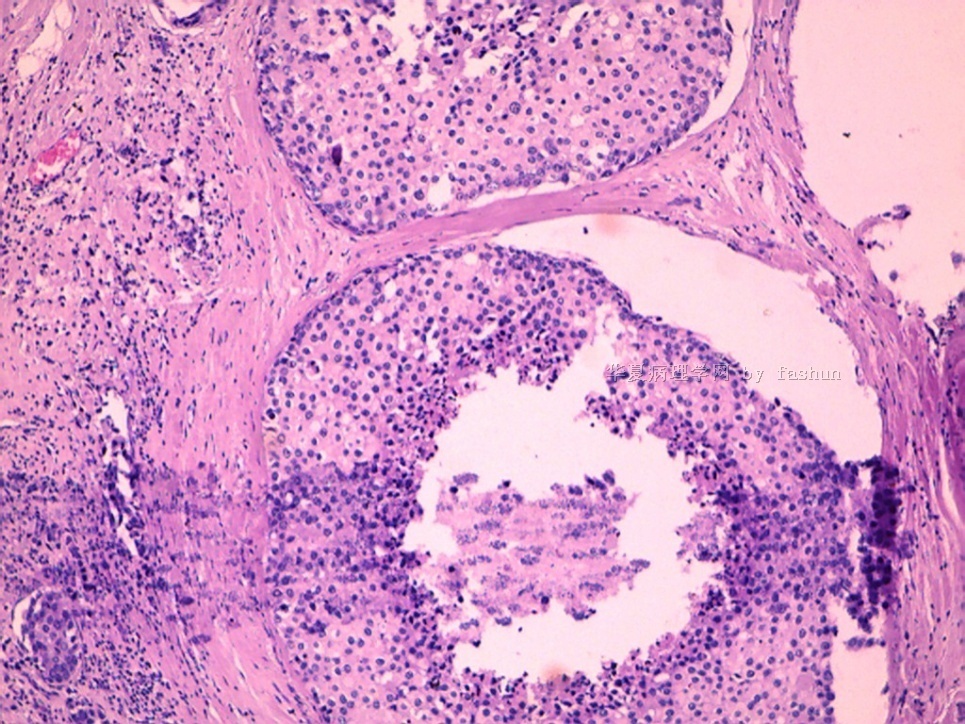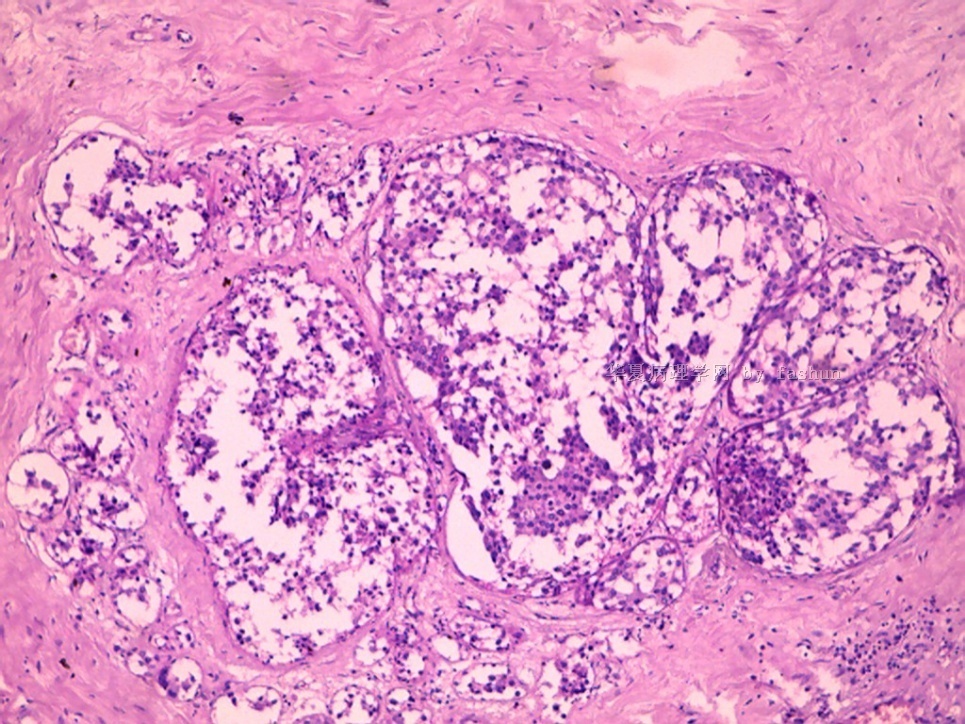以下是引用cqzhao在2010-10-26 19:41:00的发言:
以下是引用笃行者在2010-10-20 20:36:00的发言:
我们医院乳腺病例几乎都做术中冰冻,无论良恶性。
临床医生的目的一方面是为了决定手术范围(对于术前考虑恶性的),另一方面也是为了早知道结果(对于术前考虑良性的病人)。我们多次提出反对但无济于事。
好在我们的临床医生大部分都有丰富的经验,并且术前病人几乎都会做钼靶照相和B超检查,良恶性术前都判断个八九不离十,一旦病理诊断和他们的预料有出入他们会打电话问的,遇到这种情况我们也会主动和手术台联系的。好在是我院大部分乳腺癌病人都做保乳术,所以也给我们减轻了一部分压力。
即使这样,除非病变十分典型,且病理诊断与术前的临床诊断不矛盾,才直接写出诊断。否则我们常常在提出倾向性意见后,再加上“最后诊断请待常规病理”或“待常规病理进一步确诊”等字样,来保护自己。
|
Interesting. I did not remember that I did any breast frozen for diagnosis.
|
i agree with you.
the following passage is cited from sternberg's diagnostic surgical patholgy
In recent years, owing to changes in clinical practice, the use of the frozen section to diagnose mammary carcinoma has declined. Malignancy is usually diagnosed by either core needle biopsy or open excisional biopsy of ambulatory patients. The need to consider treatment alternatives precludes the use of frozen section diagnosis immediately before definitive treatment (
2). Frozen sections may be appropriate for the confirmation of a cytologic diagnosis of carcinoma or the evaluation of surgical margins. If frozen section is undertaken and any doubt arises about the diagnosis, a final decision should be deferred until processed tissue is available. Difficulties are usually attributable to sampling errors, technical problems, or occasionally true histologic misinterpretation. Errors in interpretation arise particularly with sclerosing lesions (sclerosing adenosis, radial scar, ductal adenoma), epithelial hyperplasia, papillary lesions, and fat necrosis. The diagnosis of in situ carcinoma can also cause problems, not only because it may be difficult to distinguish from benign epithelial hyperplasia but also because stromal invasion cannot always be excluded in the small sample usually examined.
以下是引用cqzhao在2010-10-26 19:41:00的发言:
以下是引用笃行者在2010-10-20 20:36:00的发言:
我们医院乳腺病例几乎都做术中冰冻,无论良恶性。
临床医生的目的一方面是为了决定手术范围(对于术前考虑恶性的),另一方面也是为了早知道结果(对于术前考虑良性的病人)。我们多次提出反对但无济于事。
好在我们的临床医生大部分都有丰富的经验,并且术前病人几乎都会做钼靶照相和B超检查,良恶性术前都判断个八九不离十,一旦病理诊断和他们的预料有出入他们会打电话问的,遇到这种情况我们也会主动和手术台联系的。好在是我院大部分乳腺癌病人都做保乳术,所以也给我们减轻了一部分压力。
即使这样,除非病变十分典型,且病理诊断与术前的临床诊断不矛盾,才直接写出诊断。否则我们常常在提出倾向性意见后,再加上“最后诊断请待常规病理”或“待常规病理进一步确诊”等字样,来保护自己。
|
Interesting. I did not remember that I did any breast frozen for diagnosis.
|
i agree with you.
the following passage is cited from sternberg's diagnostic surgical patholgy
In recent years, owing to changes in clinical practice, the use of the frozen section to diagnose mammary carcinoma has declined. Malignancy is usually diagnosed by either core needle biopsy or open excisional biopsy of ambulatory patients. The need to consider treatment alternatives precludes the use of frozen section diagnosis immediately before definitive treatment (
2). Frozen sections may be appropriate for the confirmation of a cytologic diagnosis of carcinoma or the evaluation of surgical margins. If frozen section is undertaken and any doubt arises about the diagnosis, a final decision should be deferred until processed tissue is available. Difficulties are usually attributable to sampling errors, technical problems, or occasionally true histologic misinterpretation. Errors in interpretation arise particularly with sclerosing lesions (sclerosing adenosis, radial scar, ductal adenoma), epithelial hyperplasia, papillary lesions, and fat necrosis. The diagnosis of in situ carcinoma can also cause problems, not only because it may be difficult to distinguish from benign epithelial hyperplasia but also because stromal invasion cannot always be excluded in the small sample usually examined.


